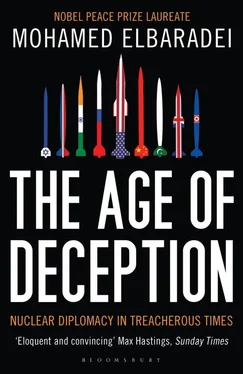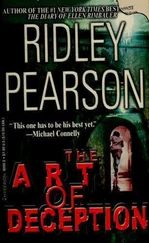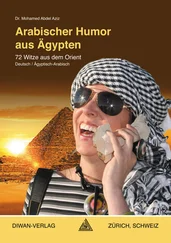The problem was, no one knew if any of this was real. The allegations had supposedly originated from a laptop computer that held extensive supporting documentation. U.S. intelligence said they had been handed the laptop in mid-2004. They told us it had come from Iran but refused to reveal their source. They said only that their source had gotten it from a third party and that there was reason to believe this person was now dead.
“I can fabricate that data. It looks beautiful, but is open to doubt.” This statement, from an anonymous “senior European diplomat” quoted in the New York Times , was a typical reaction that was echoed by multiple nuclear experts. [33] William J. Broad and David E. Sanger, “Relying on Computer, U.S. Seeks to Prove Iran’s Nuclear Aims,” New York Times, November 13, 2005.
The documentation on the laptop seemed damning but only if it could be proven authentic. Not being able to trace the source made the information extremely tough to verify. Worse still, the United States refused to release copies of most of the documentation so that we could share it with Iran to begin the investigative process. What little we could pass on, Iran dismissed as fabricated and baseless.
After many months of a mutual stand-off on these alleged studies, the IAEA was given additional pieces of the documentation—although still a relatively small portion—that we could discuss with Iran. Working to cover every angle, Agency inspectors also identified a range of procurement activity by various entities in Iran that we thought might relate to the alleged studies. Iran agreed to address the weaponization issue under the work plan, and our discussions began. But as the February report showed, we still had some way to go.
Then, two days before the Board was scheduled to review the report, the Security Council adopted a third resolution, with more sanctions on Iran. To put it another way, the council issued the verdict before the deliberation. I had in fact seen a draft resolution that did not even refer to my report. [34] I had alerted South Africa to this omission, and mention was made in the resolution but not to any substantive effect.
Not only was this a procedural fault, it gave the impression—perhaps accurately—that the council was taking action based on predetermined policy objectives rather than on the facts.
Reactions to the report itself were all over the map. The United States was complimentary, saying the report was damning for Iran, presumably because some of the allegations about weaponization studies had been openly stated for the first time. The Iranians declared it “a total victory, vindicating our program,” presumably because of all the issues that had been resolved. Of course, everyone read from the report selectively.
Reactions in the media were equally split. Danielle Pletka and Michael Rubin, writing in the Wall Street Journal , blasted me as anti-West and having a hidden agenda:
Mr. ElBaradei’s report culminates a career of freelancing and fecklessness which has crippled the reputation of the organization he directs. He has used his Nobel Prize to cultivate an image of a technocratic lawyer interested in peace and justice and above politics. In reality, he is a deeply political figure, animated by antipathy for the West and for Israel on what has increasingly become a single-minded crusade to rescue favored regimes from charges of proliferation. [35] “ElBaradei’s Real Agenda,” Wall Street Journal, February 25, 2008.
Not to be outdone, another Israeli official, Housing Minister Zeev Boim, called for my resignation, saying that my behavior was that of a “planted agent.” [36] “Israeli Minister Says Sack ElBaradei over Iran,” Reuters, March 9, 2008.
Thankfully, these criticisms were balanced by other analyses, among them an article in the Financial Times by Joe Cirincione and Ray Takeyh from the Council on Foreign Relations. Despite the attacks against me, they said, I was quietly succeeding in disarming Iran:
The point that Mr ElBaradei’s critics miss is that he is judiciously achieving the goals that they seemingly desire—the disarmament of the Islamic Republic…. Instead of sanctions, the west should appreciate that a nuanced diplomacy of reconciliation could both regulate Iran’s nuclear programme and help stabilise the Middle East. It is the much maligned Mr ElBaradei that has paved the way for success. [37] “ElBaradei Is Quietly Managing to Disarm Iran,” Financial Times, February 27, 2008.
On April 8, the first signs appeared of Iran’s reaction to the Security Council resolution, when Ahmadinejad announced plans to expand enrichment operations at Natanz to six thousand centrifuges. This was obviously a show of defiance for his domestic audience. It may also have been meant to put pressure on the United States and Europe to take a different tack.
In any case, his pronouncement was not put into place. The Iranians continued to install centrifuges but at a rate slower than predicted. Their primary focus was on gaining experience operating the existing three thousand P-1 machines and testing their higher-capacity next-generation machines—which they referred to as IR-2 and IR-3 models.
The most regrettable outcome of the resolution was that Iran’s cooperation with the IAEA essentially stalled on addressing the facts of the alleged weaponization studies. In the weeks that followed, we made little progress.
Just before I issued my May 2008 report on Iran, the Iranians offered to give us access to key individuals and crucial information—precisely what we had been pressing for. This would prove, they said, that to the extent the alleged activities had taken place, they were not nuclear-related. But there was a condition: the IAEA had to guarantee in advance that we would conclude the issue prior to the June Board meeting.
This was ludicrous. We could not provide a guarantee before the fact, and they knew it. In my report, I criticized Iran for its recent lack of transparency. To keep things in perspective, I emphasized that we had seen no indication of the use of nuclear material in relation to the alleged activities, but from what I could tell, Iran was playing wait-and-see with the coming shift in the U.S. administration. If the weaponization work had in fact occurred, the Iranians would likely try to reveal it only during negotiations with the United States as part of a comprehensive settlement of Iran’s nuclear issues. And if the documentation on the laptop was fabricated, as Tehran claimed, the Iranians would likely try to get a high price for the damaging effect of the accusations.
Two days after the June report was released, Olli Heinonen gave a technical briefing that raised the hackles of many observers. Speaking to Board representatives, he mentioned that the IAEA now had intelligence from about ten countries that tended to support claims that Iran had engaged in weaponization studies in the past. When he mentioned a uranium metal document Iran received in 1987 through the A. Q. Khan network, he used the term alarming . Some of the developing country representatives got the impression that Olli had bought into the U.S. accusations.
Adding fuel to the fire, former UNSCOM chief inspector Scott Ritter wrote an article accusing Olli of working for the CIA and characterized him as “the pro-war yin to the anti-confrontation yang of his boss, IAEA Director General Mohamed ElBaradei.” [38] Scott Ritter, “Acts of War,” Truthdig, July 29, 2008. As usual, Ritter was quite emphatic: “Olli Heinonen might as well become a salaried member of the Bush administration, since he is operating in lock step with the U.S. government’s objective of painting Iran as a threat worthy of military action.”
Ritter had gained a reputation as a truth teller for speaking out against the Bush administration’s policies on Iraq and Iran. In this case, however, he was dead wrong. Olli was among the most experienced members of my team. We did not always see eye to eye, but I valued his keen insight, and we spent long hours together dissecting the finer points of Iran’s nuclear program. Unfortunately, this would be the first of many stories, from various quarters, alleging that Olli and I were in disagreement behind the scenes as to how to deal with Iran’s nuclear program. [39] As in any institution, there were differences of view among the many people providing input on complex issues, including between the lawyers and the technical people. My reports to the Board on Iran customarily went through ten to fifteen drafts, with painstaking efforts to get the facts straight and ensure objectivity in our assessments. But in each case, Olli and I agreed on the final report before its issuance.
Читать дальше












